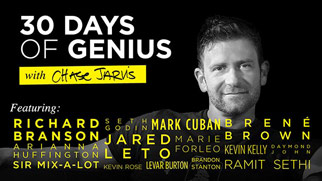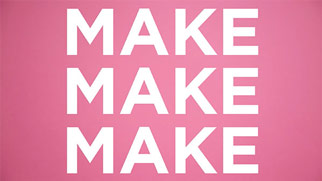If you’ve been following me for awhile, you probably know I’m a big fan of cold water therapy. But that didn’t happen overnight. I first experienced the power of cold therapy during athletics, in the form of icing. The anti-inflammatory properties of the ice reduced swelling and improved recovery. At the time, the multitude of benefits beyond decreased inflammation remained unknown.
After college and leaving a possible athletic career behind, I dove head first into photography and left my cold water days behind. It wasn’t until years later during a “polar bear challenge” on New Years, that I ran into the ocean like a crazy man and re-emerged feeling more alive than ever. Reconnected with my ice bath past, I turned that curiosity into a habit and it’s been a game changer in my life such as the ability to push through lightweight fear, and increasing my resilience in the face of challenges and discomfort.
Listen to the Podcast
The science around cold therapy continues to expand
Fast forward 10-15 year later, and the the science around cooling and cold therapy continues evolving (see resources + links below). The jury is out. Cold is incredibly good for you. Among some of the benefits:
- Reducing inflammation
- Lowering body fat
- Increasing hormone levels
- Lowering blood sugar,
- Enhancing immune function (Wim Hof study)
- Improving sleep quality
- Increasing pain tolerance
- and more
Does it get easier?
Yes. But there is always a mental barrier to overcome. The ability to calm the nervous system through deep slow breathing and intentional focus in order to remain in the ice bath extends beyond the cold. I’ve found that a cold practice increases willpower and ability to endure stress across the board.
How to get started with Cold Therapy
Interesting in trying it? There are a number of ways to get cold, each with a different level of effort and outcome.
Level 1: At the most basic level, splashing cold water on your face, cooling the palms of your hands, or placing a cold towel on your neck are all effective forms of cold therapy. As it turns out, the palms, soles of your feet and face are in effect, heat portals, places where heat transfers more rapidly. Especially if you’re not ready for a cold shower or plunge, try cooling your body in one of these ways.
Level 2: the cold shower. After your normal shower, turn the water cold, letting the water hit all areas of your body beginning with the hands and feet. Starting with the extremities and working in reduces the negative effects of vasoconstriction. The shower is a great way to start practicing with 60-seconds and slowly increasing it up to 5 minutes. There are many ways to get started, but a common method is 30 days cold shower challenge:
- Day 1-10: Start or end each day with a cold shower. Do either:
- 1-minute: Stand under cold water, start with hands and feet and getting your chest and head under the water.
- Alternate Cold/Hot: Step into cold water for 20-seconds, step out for 10-seconds. Repeat 3x.
- Day 11-20: Start each day with a 2.5-3-minute cold shower using the techniques mentioned above.
- Day 21-30: Start each day with a 5-minute cold shower.
Level 3: Full-on cold plunge. It sounds intense, but for some, getting into a cold tub is easier than a cold shower. You don’t have to build your own dedicated cold plunge or invest thousands of dollars. Depending on the climate and the season, a cold lake or natural body of water might be accessible. Otherwise, using ice in the bathtub or a making your own backyard cold tub are options. Keep in mind that whatever tub you use, it needs to be large enough such that you can submerge up to your neck/chin or ears. Some common places to start:
- Rain Barrel
- Stock Tank
- Cattle Trough
The specific temperature and duration of time aren’t worth over-indexing on. After years of experimentation and variation, my personal sweet spot is 3-5 minutes in approximately 40 degree water. But you can get benefits even at 55-60 degree water. The key is that the water is uncomfortable, but not so cold you won’t actually keep the habit. If you do it consistently, you can work up to colder.
A few things to take note of:
- Start small. Don’t be tempted to stay longer than 5 minutes. After 5 minutes, the benefits become diminished and even harmful if you’re in too long. You want to stress your body like a good workout, but too much stress can cause more harm than good. Overexposure can lead to dangerous situations like shock and hyperthermia.
- Unless you are a veteran, don’t go underwater alone. It’s always good to have another person present for safety.
- Slow, deep breaths through the nose calm the nervous system and put your body at ease. Try to relax your body and focus on your breath. Sometimes humming helps.
Final piece of advice: Do your research and talk to your doctor before starting a wellness routine. Though I’ve been practicing for many years, I’m no expert. Fortunately, there’s a growing body of science around the benefits of cold exposure therapy that is worth digging into. If you do try it, give it at least 5-7 sessions or more. Remember, start with something you can sustain. You can always make it colder. Sustaining its benefits will take time and consistent practice. But if you stick with it, you might just find the benefits life changing.
More Resources:
Benefits of cold water
https://www.healthline.com/health/cold-water-therapy#benefits
Wim Hof Method Science: https://www.wimhofmethod.com/science
Benefits of cold water therapy on various systems of the body
https://www.ncbi.nlm.nih.gov/pmc/articles/PMC4049052/
Subscribe
This podcast is brought to you by CreativeLive. CreativeLive is the world’s largest hub for online creative education in photo/video, art/design, music/audio, craft/maker, money/life and the ability to make a living in any of those disciplines. They are high quality, highly curated classes taught by the world’s top experts — Pulitzer, Oscar, Grammy Award winners, New York Times best selling authors and the best entrepreneurs of our times.





















